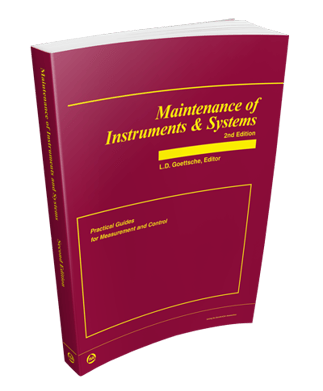AutoQuiz is edited by Joel Don, ISA's social media community manager.
This automation industry quiz question comes from the ISA Certified Control Systems Technician (CCST) program. Certified Control System Technicians calibrate, document, troubleshoot, and repair/replace instrumentation for systems that measure and control level, temperature, pressure, flow, and other process variables. Click this link for more information about the CCST program.
Which of the following features is unique to a pneumatic differential pressure sensor/transmitter?
a) high pressure inlet
b) d/p cell diaphragm
c) low pressure inlet
d) feedback bellows
e) all of the above
As the bellows expands, it draws the nozzle away from the baffle. There is a balance that is achieved by matching the motion of the baffle with the motion of the nozzle. This balance keeps the distance between the baffle and nozzle, and, hence, the output pressure, constant for a constant input pressure. Only pneumatic differential pressure transmitters have this feature. There are other classes of devices, such as electro-pneumatic relays (I/P transducers) that also use this principle.
The correct answer is D, feedback bellows. In a pneumatic transmitter, the nozzle faces a baffle, so, as the measured pressure increases, the baffle moves toward the nozzle. This causes the backpressure within the nozzle to rise. The rising pressure is amplified by a pneumatic relay, with the output pressure applied to both the feedback bellows and to the sensor output port.
Reference: Goettsche, L.D. (Editor), Maintenance of Instruments and Systems, 2nd Edition

About the Editor
Joel Don is the community manager for ISA and is an independent content marketing, social media and public relations consultant. Prior to his work in marketing and PR, Joel served as an editor for regional newspapers and national magazines throughout the U.S. He earned a master's degree from the Medill School at Northwestern University with a focus on science, engineering and biomedical marketing communications, and a bachelor of science degree from UC San Diego.




